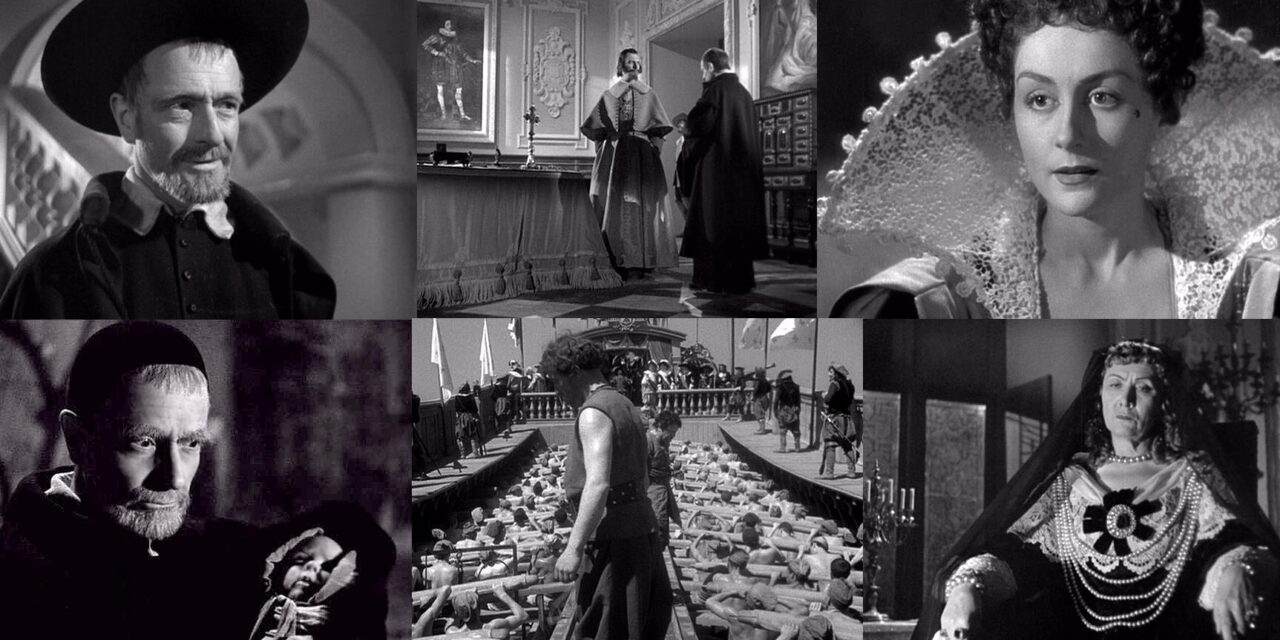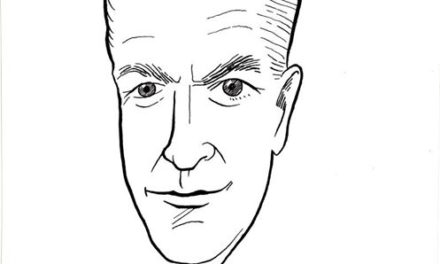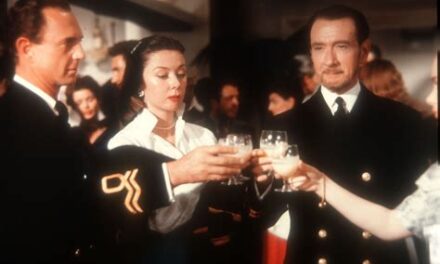Monsieur Vincent by Maurice Cloche is a highly acclaimed monument in the history of film, having won several awards. The story begins in 1617, in the middle of a golden century of French sainthood. Indeed, besides the main character, Saint Vincent de Paul, the film also includes Saint Louise de Marillac.
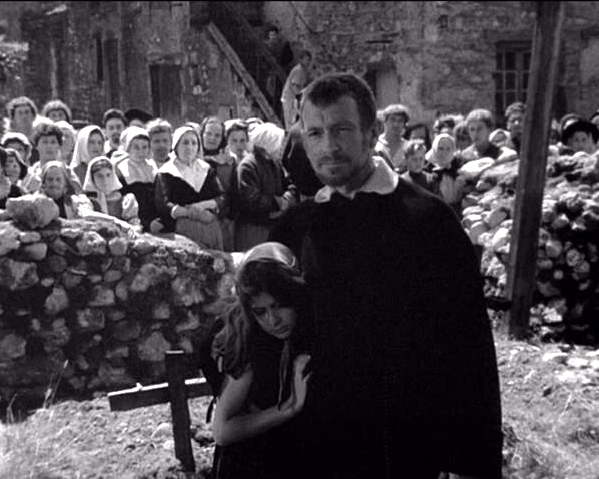 Vincent enters the small town of Châtillon. Everyone hides from him or throws rocks to show that the new priest is unwelcome. The church is trashed. People, though, are afraid of the plague, particularly of one woman, but he insists on seeing her. He visits the Count of Châtillon, but he too is rude. He finally proves to the people that the woman did not die of the plague because he and her daughter are fine. He buries the woman, gets the girl adopted and even treats the wounded count. We learn that Vincent spent two years with a doctor in Barbary, that is, the Barbary Coast in Islamic Algiers. He tells the count that the poorest woman in town adopted the girl, making her the richest woman. His words affect Louise, played with magnanimity by Yvonne Gaudeau, who in turn helps the poor woman.
Vincent enters the small town of Châtillon. Everyone hides from him or throws rocks to show that the new priest is unwelcome. The church is trashed. People, though, are afraid of the plague, particularly of one woman, but he insists on seeing her. He visits the Count of Châtillon, but he too is rude. He finally proves to the people that the woman did not die of the plague because he and her daughter are fine. He buries the woman, gets the girl adopted and even treats the wounded count. We learn that Vincent spent two years with a doctor in Barbary, that is, the Barbary Coast in Islamic Algiers. He tells the count that the poorest woman in town adopted the girl, making her the richest woman. His words affect Louise, played with magnanimity by Yvonne Gaudeau, who in turn helps the poor woman.
 Vincent also persuades Philippe-Emmanuel de Gondi, Count of Joigny, and his wife, Françoise Marguerite de Silly, Madame de Gondi, to pay him 45,000 livres to hire six priests to serve the 12,000 souls in their territory. In fact, all the women at court are under the spell of the servant of the poor. Cardinal Richelieu, however, wants to make this Doctor of Law the chaplain to His Majesty’s Galleys, but that does not suit his higher calling to the lowly, yet he is ordered to take the position anyway. On the flagship, he sees the condemned rowing with brutal treatment while the officers pursue their vain purposes. Appalled at the sight, he pulls a dying man from his seat and takes his position at the oar.
Vincent also persuades Philippe-Emmanuel de Gondi, Count of Joigny, and his wife, Françoise Marguerite de Silly, Madame de Gondi, to pay him 45,000 livres to hire six priests to serve the 12,000 souls in their territory. In fact, all the women at court are under the spell of the servant of the poor. Cardinal Richelieu, however, wants to make this Doctor of Law the chaplain to His Majesty’s Galleys, but that does not suit his higher calling to the lowly, yet he is ordered to take the position anyway. On the flagship, he sees the condemned rowing with brutal treatment while the officers pursue their vain purposes. Appalled at the sight, he pulls a dying man from his seat and takes his position at the oar.
Recovering after that ordeal, he renounces all his property, wealth and benefices, declaring the poor to be his masters. He takes up residence in a filthy little room, then lets a man with tuberculosis sleep on the floor, who explains all the noises and troubles of the other residents through the night. The poor do not have the luxury of sleep. They do not care for anyone but themselves. In a touching moment, Vincent unable to sleep, prays to the Lord for forgiveness because he did not know how much the poor suffer.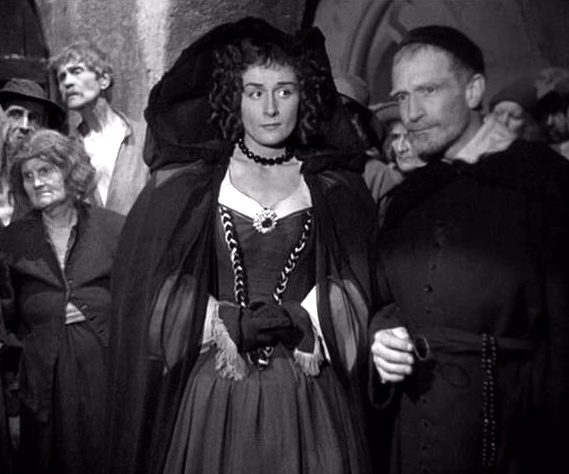
He enlists Father Portail to help him organize the distribution of food and the care of the destitute, but he realizes that he needs money. Louise de Marillac not only provides funds, but a helping hand and introduces him to other noble ladies. They, however, live in a different world and have no grasp of what service to the poor entails. They are more concerned about what to wear.
A poor maid, Marguerite Naseau (1594-1633), however, volunteers to help. She becomes the first Daughter of Charity. Then, Vincent understands that the poor can also help to serve the poor. In time, other women joined her, namely, Barbe Engibouste and Madeleine Drugeon, but people were upset to see nuns on the street, instead of in a convent. Vincent said that the street is their convent, yet he needed to bring them together.
He was given a building, Saint Lazare, to be a convent, hospital and more. He also needs someone to manage the sisters, but his choice is afraid of the poor. Although hesitant, Louise was the first to understand him, and he understands that she would be strong, firm and efficient. The ward, though, is so full of patients that there are several per bed and they compete among themselves. Even though Vincent distributes 2,000 soups each day, he is handed an eviction notice! Just then, refugees from Lorraine arrive, 2,000 victims of war. Louise, convinced that she is too weak, has a change of heart. When Chancellor Séguier tells him that he can eliminate poverty by arresting them all, Vincent replies that poverty is not a crime. It is not enough to shelter and feed them; they must be free and treated humanely. The government was more concerned about finances, international affairs and war, but Vincent is forcing the secular powers to minister to the poor as well.
 Then, we learn about another group of people that need help, infants. Mothers leave them on the steps of churches. Half of them die. When a lady suggests that perhaps God wants these bastards to die, he fires back that God sent His Son to die for sinners. Now, Pierre Fresnay shows the fury of the saint in his defense of homeless orphans, whom the ladies find repugnant. He puts them all to shame. Indeed, even today, he may put us all to shame.
Then, we learn about another group of people that need help, infants. Mothers leave them on the steps of churches. Half of them die. When a lady suggests that perhaps God wants these bastards to die, he fires back that God sent His Son to die for sinners. Now, Pierre Fresnay shows the fury of the saint in his defense of homeless orphans, whom the ladies find repugnant. He puts them all to shame. Indeed, even today, he may put us all to shame.
 In a quick scene that takes us from 1645 to 1655, we see violence and chaos. Then, in 1660, Cardinal Graziani visits Saint Lazare. Father Portail, noticeably older, gives him a tour and recounts a bit of the history. Even the Count, Emmanuel de Gondi, joined the society after the death of his wife! Now, we see Vincent as an old man conversing with Queen Anne. He learned to live on four hours of sleep, but he regrets all his sleep, closing his eyes to misery. The Queen tells him that he opened the eyes of the rich to the vanity of their lives, yet he feels that he has accomplished nothing.
In a quick scene that takes us from 1645 to 1655, we see violence and chaos. Then, in 1660, Cardinal Graziani visits Saint Lazare. Father Portail, noticeably older, gives him a tour and recounts a bit of the history. Even the Count, Emmanuel de Gondi, joined the society after the death of his wife! Now, we see Vincent as an old man conversing with Queen Anne. He learned to live on four hours of sleep, but he regrets all his sleep, closing his eyes to misery. The Queen tells him that he opened the eyes of the rich to the vanity of their lives, yet he feels that he has accomplished nothing.
 On his way back to Saint Lazare, he stops the carriage to pick up a man dying of hunger. Monsieur Vincent is not well. When Portail tells him that the Cardinal is there to see him, he tells him that he is expecting a more important visitor that night. He instructs the newest sister that charity is heavier than a bucket of soup and a basket of bread. It is his final instruction. The audience does not need to see him die. It is better to see him pass on his life to the next generation. Monsieur Vincent is not only a masterful work of art, but a truly edifying film that inspires charity. Indeed, Saint Vincent de Paul is the Patron of Charity. Is there anything greater?
On his way back to Saint Lazare, he stops the carriage to pick up a man dying of hunger. Monsieur Vincent is not well. When Portail tells him that the Cardinal is there to see him, he tells him that he is expecting a more important visitor that night. He instructs the newest sister that charity is heavier than a bucket of soup and a basket of bread. It is his final instruction. The audience does not need to see him die. It is better to see him pass on his life to the next generation. Monsieur Vincent is not only a masterful work of art, but a truly edifying film that inspires charity. Indeed, Saint Vincent de Paul is the Patron of Charity. Is there anything greater?

